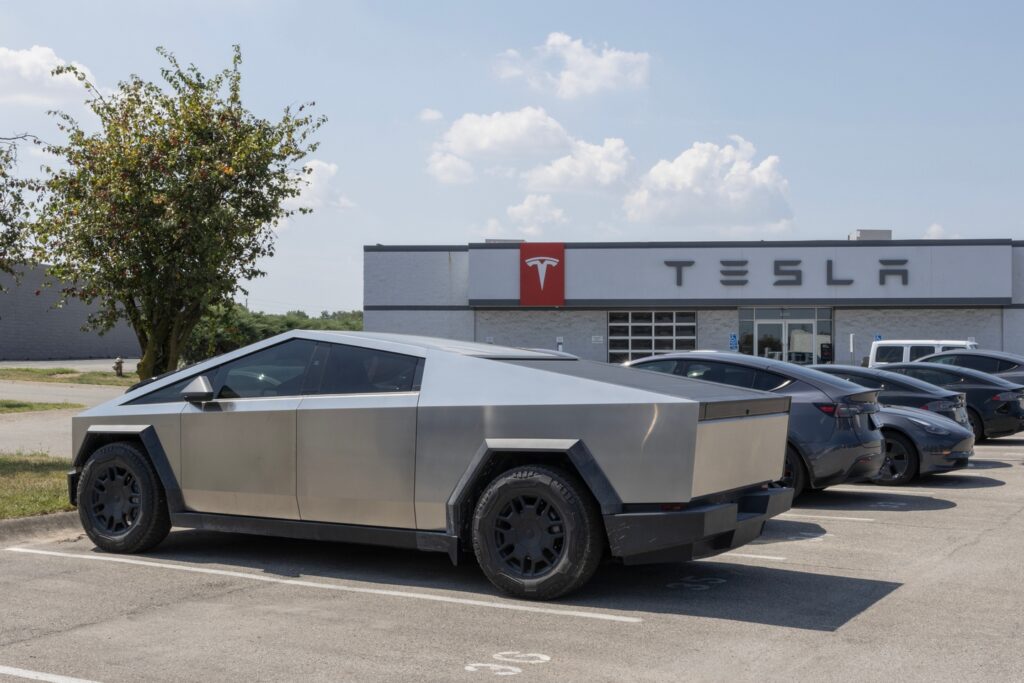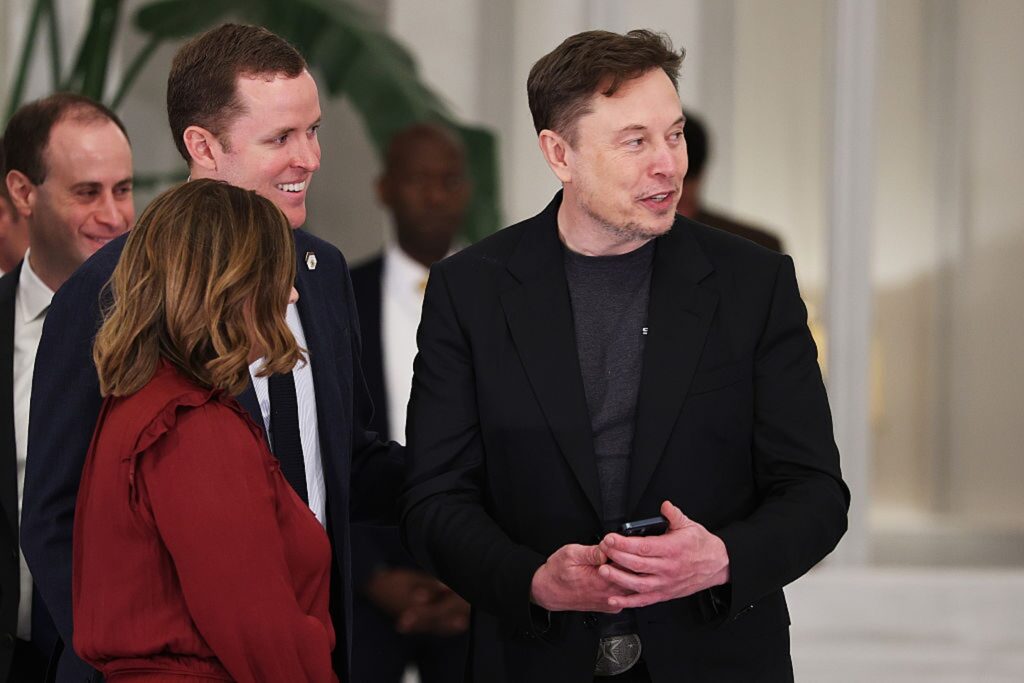Blog
The Cybertruck Crisis: $800M in Unsold Tesla Trucks
Tesla’s Cybertruck was meant to be a bold statement — a futuristic electric pickup truck that would revolutionize the market and redefine what consumers expect from utility vehicles. Yet, today, reports reveal a troubling reality: Tesla is reportedly stuck with over $800 million worth of unsold Cybertrucks sitting in inventory. More than 10,000 units remain unpurchased, despite aggressive price cuts and the launch of a cheaper model variant.
This article explores the reasons behind Tesla’s Cybertruck struggles, the broader challenges facing the company, and what this could mean for Tesla’s position in the increasingly competitive electric vehicle (EV) landscape.
The Initial Hype: Cybertruck’s Bold Launch and High Expectations
When Elon Musk unveiled the Cybertruck in late 2019, it was an event unlike any other in automotive history. The stainless steel exterior, angular, sci-fi inspired design, and Tesla’s promises of unprecedented performance and durability captured global attention. Pre-orders flooded in, with estimates suggesting that hundreds of thousands of people were excited about this revolutionary vehicle.

Tesla boldly set a goal of producing and selling 250,000 Cybertrucks per year, aiming to challenge traditional internal combustion pickups like the Ford F-150 and Chevrolet Silverado — some of the best-selling vehicles in the U.S. market. Given the rising demand for electric vehicles and Tesla’s growing brand reputation, many believed the Cybertruck could become a major commercial success.
However, the gap between expectation and reality soon became apparent.
Polarizing Design: A Double-Edged Sword
The Cybertruck’s unique design has been both a blessing and a curse. While its futuristic look appeals to a niche group of consumers who value innovation and radical aesthetics, it alienates many traditional pickup buyers. For those who view a truck as a workhorse or a family vehicle, the Cybertruck’s sharp angles and unorthodox shape seem impractical or even unappealing.
Unlike the conventional, more conservative styling of competitors, Tesla’s approach risked limiting its potential market. In the pickup segment, where buyers often prefer ruggedness, reliability, and proven design features, the Cybertruck’s “space-age” appearance has been a barrier.
Several consumer surveys and automotive critics have noted that the design is a significant factor in the hesitancy to purchase, particularly among buyers in rural and suburban areas, where pickups serve everyday utility purposes. The polarizing look challenges Tesla to either broaden its appeal or accept a narrower, more specialized customer base.
Pricing Challenges and Feature Trade-Offs
Tesla initially priced the Cybertruck at a premium level, with the flagship all-wheel-drive version costing over $80,000. To attract more buyers, Tesla introduced a more affordable Rear-Wheel Drive version at $69,990 in April 2025. Unfortunately, this cheaper variant came with significant compromises, including the removal of desirable features such as adaptive suspension, the rear lightbar, and power outlets in the truck bed.
The feature cuts likely diminished the vehicle’s attractiveness even further. Potential buyers accustomed to Tesla’s reputation for advanced technology and premium features were faced with a “stripped-down” model that felt less innovative.
Even with a dramatic $10,000 price cut across the Cybertruck lineup announced last month, sales have failed to surge. The demand simply isn’t meeting supply, and Tesla’s inventory continues to grow.
This mismatch between pricing, product offering, and market expectations highlights the challenges Tesla faces in finding the right balance between affordability and value in the electric truck segment.
Elon Musk’s Political Distraction: Impact on Tesla’s Leadership and Vision
Another significant factor affecting Tesla’s current woes is Elon Musk’s expanded role outside the company. His recent appointment as head of the Department of Government Efficiency (DOGE) tasked him with ambitious goals, including cutting $2 trillion from the federal budget. This high-profile, politically charged position has taken Musk’s attention away from day-to-day leadership and long-term strategy at Tesla.
Tesla’s rapid rise has historically been linked to Musk’s visionary leadership and hands-on approach. His public persona, innovative ideas, and relentless work ethic energized employees and investors alike. However, this political distraction may have diluted his focus, leading to missed opportunities and slower responses to market challenges.
Investors and analysts have expressed concern that Musk’s political ties — especially his well-known connections to former President Donald Trump — have made Tesla more of a political lightning rod. This politicization risks alienating potential customers, complicating regulatory relationships, and overshadowing Tesla’s brand image as a leader in clean technology.
Market Reactions and Investor Sentiment
Tesla’s financial struggles have not gone unnoticed by the investment community. A notable development is that some high-profile investors, including Musk’s own brother Kimbal Musk, have started to sell their Tesla shares. This insider selling is often viewed as a red flag, signaling diminished confidence in the company’s near-term prospects.
Additionally, concerns about tariffs and trade policies implemented during the Trump administration have added pressure to Tesla’s global operations. Tariffs on imported parts and vehicles increase costs, eroding margins and complicating Tesla’s expansion plans, especially as the company looks to scale production internationally.
Investor unease is compounded by Tesla’s declining sales and profits. With electric vehicle sales dropping 20% in the last quarter and annual net profits shrinking by a staggering 71% year-on-year, the company faces mounting pressure to stabilize its financial position.
Sales Decline: The Numbers Behind the Crisis
Tesla’s sales figures offer a quantitative measure of its current struggles. Selling only 6,400 Cybertrucks in the first quarter of 2025—well below expectations—reflects a significant slowdown. This figure contrasts sharply with the initially projected 250,000 units annually, illustrating the vast gap between ambition and reality.
More broadly, Tesla’s overall electric vehicle sales declined by 20% in the same quarter, signaling a trend beyond just the Cybertruck. Other manufacturers, including legacy automakers and new EV startups, are intensifying competition with new models and aggressive pricing.
The steep 71% drop in Tesla’s net profit further underscores how these sales challenges are impacting the company’s bottom line. Profitability depends on high sales volumes and efficient cost management, both of which are under strain as inventory piles up and production costs remain high.
Quality Control Issues and Product Recalls
Another critical challenge Tesla faces is ongoing quality and reliability concerns. The company has experienced multiple recalls in recent months due to safety-related defects. These include reports of sticky accelerators that risk unintended acceleration and malfunctioning doors that fail to operate correctly.

Such issues have a dual effect: they increase costs for Tesla due to repair and replacement efforts, and they erode consumer trust in the brand. When buyers consider an expensive vehicle purchase, especially an electric truck with new technology, perceived reliability plays a huge role in their decision-making process.
Tesla’s early reputation for pushing boundaries with rapid innovation is now colliding with the market’s expectation for dependability and consistency. Balancing innovation with robust quality assurance will be essential for Tesla to regain customer confidence.
Strategic Shift: Production Focus and Workforce Realignment
Faced with poor Cybertruck sales and reliability issues, Tesla is reportedly scaling back production of the Cybertruck and shifting resources to other models, such as the Model Y. The Model Y has shown better sales performance and fewer quality complaints, making it a safer bet for revenue and brand stability.
This production pivot reveals Tesla’s pragmatic response to shifting market demands. Instead of overproducing a vehicle struggling to find buyers, the company is redirecting its workforce and manufacturing capacity toward vehicles with proven demand.
Such adjustments are common in the automotive industry, especially during times of product launch setbacks or market shifts. Tesla’s ability to pivot quickly may help mitigate losses but also signals challenges in executing its more ambitious product plans.
Consumer Preferences: From Flashy to Functional
Tesla’s traditional strategy has been to disrupt markets with innovative designs and high-tech features that capture headlines. However, the Cybertruck experience suggests that the market for electric pickups is currently more conservative than Tesla anticipated.
Buyers in this segment value practicality, ease of use, and reliability above all. Features like towing capacity, payload, driving range, and durability are critical factors. While the Cybertruck scores well on some of these metrics, its unconventional design and reported quality issues detract from its appeal.
The market’s emphasis on simplicity and dependability over flashy design is a crucial lesson for Tesla. Moving forward, Tesla may need to blend innovation with more familiar, user-friendly design elements to capture a larger share of the pickup market.
The Competitive Landscape: Rivals Closing the Gap
Tesla is no longer the uncontested leader in electric vehicles. Traditional automakers such as Ford, GM, and Rivian have launched or are ramping up their own electric trucks, like the Ford F-150 Lightning, Chevrolet Silverado EV, and Rivian R1T. These competitors benefit from established brand loyalty, extensive dealer networks, and designs that closely mirror the conventional truck buyers know and trust.
These companies are also addressing practical concerns that some feel Tesla has overlooked, such as interior comfort, towing technology, and after-sales service. As a result, Tesla’s market share in the pickup segment is under threat.
The crowded and competitive EV landscape means Tesla must not only innovate but also ensure its products meet or exceed the evolving expectations of mainstream consumers.
Long-Term Implications for Tesla’s Brand and Market Position
Tesla’s current challenges with the Cybertruck raise broader questions about the company’s trajectory. Will Tesla remain a disruptive innovator, or is it entering a phase of consolidation and adaptation?
If Tesla fails to address its product quality, pricing strategy, and public perception issues, it risks losing its lead in the EV market. A prolonged inventory backlog, declining sales, and waning investor confidence could hamper future product launches and technological advancements.
Conversely, Tesla’s history of resilience and rapid innovation should not be underestimated. The company has weathered previous setbacks and market skepticism. Strategic adjustments, renewed leadership focus, and enhanced customer engagement may enable Tesla to recover.
What Can Tesla Do to Turn the Tide?
For Tesla to overcome the Cybertruck inventory crisis and broader challenges, several key actions are critical:
- Re-evaluate the Cybertruck’s design and features to better align with mainstream consumer preferences without losing its innovative edge.
- Enhance product reliability through stricter quality control and faster resolution of defects to rebuild customer trust.
- Improve marketing strategies to better communicate the Cybertruck’s unique value proposition and practical benefits.
- Recommit leadership focus to Tesla’s core business by balancing Elon Musk’s external engagements with robust internal management.
- Explore partnerships or collaborations to expand production capabilities and market reach while mitigating risks.
- Address geopolitical and trade concerns by diversifying supply chains and adjusting to tariff impacts.
Only by implementing comprehensive strategic measures can Tesla hope to reduce the massive Cybertruck inventory, restore profitability, and maintain its position as a leader in electric mobility.
Conclusion: Navigating a Pivotal Moment for Tesla
Tesla’s $800 million worth of unsold Cybertrucks is more than a temporary inventory problem — it is a symptom of deeper challenges facing the company. From design missteps and pricing struggles to leadership distractions and market competition, Tesla’s journey forward is fraught with obstacles.
Yet, Tesla remains a powerful force in the EV industry, with tremendous technological capabilities and a loyal customer base. If it can learn from its mistakes, respond to market realities, and refocus its leadership, Tesla could turn the Cybertruck story around and continue to shape the future of transportation.
For now, the unsold Cybertruck inventory serves as a stark reminder that innovation alone isn’t enough. Success requires understanding consumer needs, maintaining quality, and executing a clear vision—lessons Tesla is only now beginning to fully appreciate.
FAQs
Weak demand, high price, and competition have slowed Cybertruck sales significantly.
Around $800 million, with over 10,000 units still in stock.
Tesla has cut prices and introduced a cheaper Rear-Wheel Drive model.
So far, discounts haven’t generated significant new sales.
Musk’s focus on politics may have distracted from company priorities, impacting sales and reputation.
Tesla is reportedly scaling back Cybertruck production to focus on other models.
Recalls, product issues, and Musk’s political ties have hurt Tesla’s public perception.
Yes, tariffs from previous administrations could increase costs and reduce demand.
Tesla aims to improve reliability, adjust pricing, and rebuild consumer trust.
-

 Blog3 years ago
Blog3 years ago10 Celebrities and Their Equally Gorgeous Siblings
-

 Blog3 years ago
Blog3 years agoThe highest-paid actors of all time are living large
-

 Blog3 years ago
Blog3 years agoHollywood Stars’ Instagram Photos viciously replayed
-

 Blog3 years ago
Blog3 years agoUpsetting And Creepy Facts We Wish We Could Erase From Our Memory
-

 Blog3 years ago
Blog3 years agoBecome Star Quality With These Celebrity Morning Routines
-

 Blog3 years ago
Blog3 years agoSome of Hollywood’s best-known movies have secrets that will shock you
-

 Blog3 years ago
Blog3 years agoThese Celebrity Couples Did Some Bizaree Things In The Name Of Love
-

 Blog3 years ago
Blog3 years agoUsing Everyday Items These People Made The Most Amazing DIY Creations
